In FUT hair transplantation, a strip of skin is removed from the donor area (back of the head) using a scalpel, which is then divided into individual follicular units (FUs) with the aid of a high-resolution microscope. The resulting units are then inserted into the already prepared recipient openings.
Dr. Bobby Limmer, Dr. Bernstein, Dr. Limmer and the development of FUT hair transplantation: terminology, the beginnings and the use of microscopes for the preparation of follicular units
FUT hair transplantation, according to the collaborative article “Follicular Unit Transplantation – 2005“1 by Dr. Robert M. Bernstein, New York, USA and William R. Rassman, Los Angeles, USA, has its beginnings in single strip harvesting and the stereo-microscopic preparation technique of grafts by Dr. Bobby Limmer.2
He began using this technique in his practice in 1988 and published it in 1994 in the article “Elliptical Donor Stereoscopically Assisted Micrografting an approach to further refinement in hair transplantation.“2
The term “follicular unit” and the conceptual framework for follicular unit transplantation (FUT hair transplantation) were introduced to the medical literature by Dr Bernstein and Dr Rassman in the 1995 article “Follicular Transplantation – 1995”.3
Procedure and pictures of a FUT strip harvest
- The drawing and shaving of the skin strip to be harvested

- The harvested skin strip

- On the left, directly after removal – combed open. On the right the removal is covered by the overlying hair
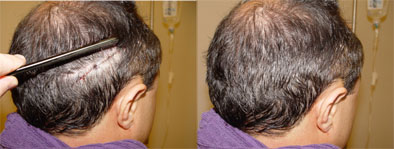
- Dissection of the skin strip
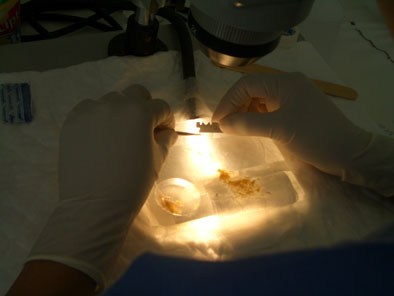
- The prepared follicular units
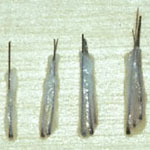
Example – Scars after a FUT – strip hair transplant
Concealment by longer hair:

FUT scar in shaved condition

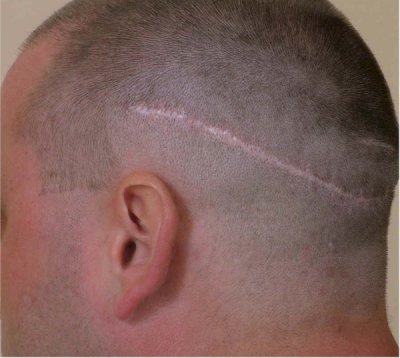
Trichophytic closure technique: What advantages can this technique offer?
Everyone who has already dealt with the common methods of hair transplant will have seen how the scar can look after FUT treatment. There are many reports with pictures available on the internet. Now, however, the significantly improved Trichophytic Closure technique can help to improve the visual situation after the procedure and after the wound/scar has healed.
Experts have developed a wound closure that reveals the possibility of adding hair to the scar, as this can grow out upwards through the scar thanks to the Trichophytic Closure technique.
According to Dr Mario Marzola4, from Adelaide, Australia, this is a technique that dates back to the days of transposition flap hair attachments (see also Yuri flap5), where the front 1-2 mm of the flap was de-epthelised (surgical removal of the epidermis) so that a few hair could grow through the resulting scar.
In addition, Dr Marzola mentions that at the ISHRS congress in San Francisco in 1999, the Australian colleague Dr Simon Rosenbaum presented a special technique for closing the wound after FUT strip hair transplantation, in which the tip of the epidermis was removed before closing the wound, a trichophytic closure just as already used for hairline formation by flap surgery, and that in his case, after years of use, a consistent improvement of the scars was achieved by this technique.4
The trichophytic closure technique has also been described by Dr Patrick Frechet and Dr Paul Rose.6
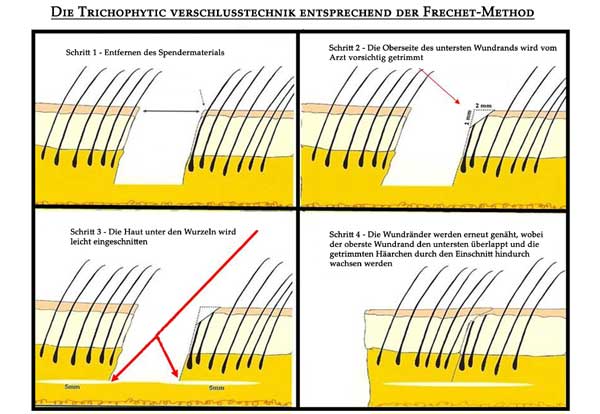
However, special skill is required because this wound closure is applied in a special way, see the above sketch:7
In the first step, the skin flap is removed. In the second step, the hair on the skin at the lower edge of the wound is shorn short (roughly like a triangle). Then small incisions are made upwards and downwards at the ends of the horizontal skin wound. Finally, the upper wound edge is placed over the shorn skin (below) and the wound is sutured. This procedure allows the hair to grow through so that the scar is later covered with hair and loses its visual dominance. Patients also have the advantage that more hairstyle variations can be considered, as even relatively short hair does not reveal a predominant view of the scar.
The Trichophytic Closure technique cannot make a FUT scar completely invisible, but the quality of life of the patients is considerably increased by this new wound closure procedure in the course of a FUT hair transplantation. Therefore, if the choice falls on a FUT hair transplantation, then one is well advised with the Trichophytic Closure technique and thus takes advantage of the most modern and effective possibility for optical restoration that is currently possible and available in the field of FUT hair transplants.
In the picture below, a comparison of the result of a removal with FUT with and without the Trichophytic-Closure closure technique:
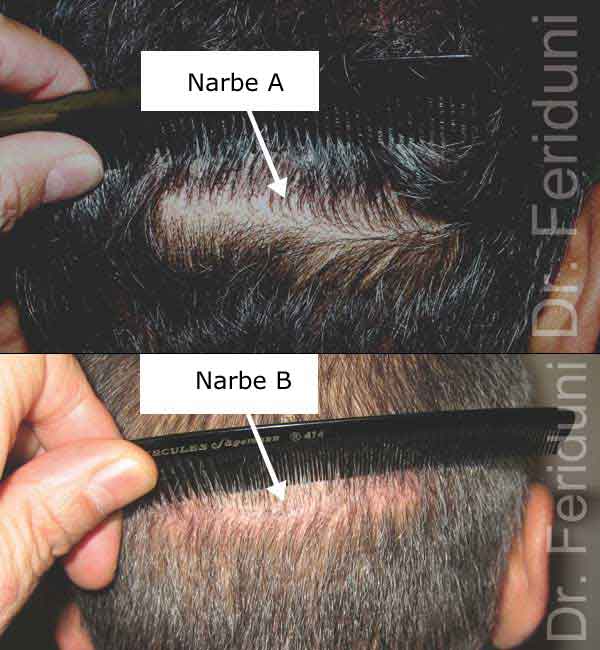
FUT hair transplant prices and costs at Hairforlife recommended doctors
Here are some examples of prices and costs from FUT Hair Transplant at Hairforlife recommended doctors:
FUT (strip & FUI) – depending on country and number of grafts:
From 1.80 Euro per graft in countries like Turkey (e.g. Istanbul) – 3.50 Euro or approx. 2.21 CHF – 4.30 CHF per graft (depending on the exchange rate) in Germany or Switzerland and Western Europe.
Hair Restoration with FUT Technique: The prices and costs of a FUT Surgery depend on the number of grafts
Ultimately, however, the prices and costs to be paid in total depend on the number of grafts required.
In order to know the total price for FUT hair transplantation, the area to be grafted must first be known and whether, for example, only receding hairline with very few areas to be grafted or already a completely bald head with very large areas.
Please read the important information regarding costs and prices in the chapter > hair transplant costs and women are also welcome to read our chapter > female hair transplant.
“Are you interested in a Hair Restoration with FUT Technique and a free online consultation including case assessment? I will be happy to advise you!
Andreas Krämer

Do you already want a consultation regarding FUT hair transplantation, I will be happy to advise you. Please read the notes of the hairforlife online consultation beforehand.
Source/References/Author
1 https://www.bernsteinmedical.com/research/follicular-unit-transplantation-2005/
2 Limmer BL. Elliptical donor stereoscopically assisted micrografting as an approach to further refinement in hair transplantation. Dermatol Surg 1994; 20:789-793
3 Bernstein RM, Rassman WR, Szaniawski W, Halperin A. Follicular transplantation. Intl J Aesthetic Rest Surg 1995; 3:119-132.
4 https://www.iahrs.org/q-a/trichophytic-closure
5 https://aibolita.com/surgical-treatment/51580-juri-flap.html
6 http://springer.nl.go.kr/chapter/10.1007%2F978-4-431-56547-5_23
7 https://www.feriduni.com/images/FUT/FUT_Trichophytic_Closure_technique.pdf
Author
Andreas Krämer/Hairforlife Expert Editorial Team


